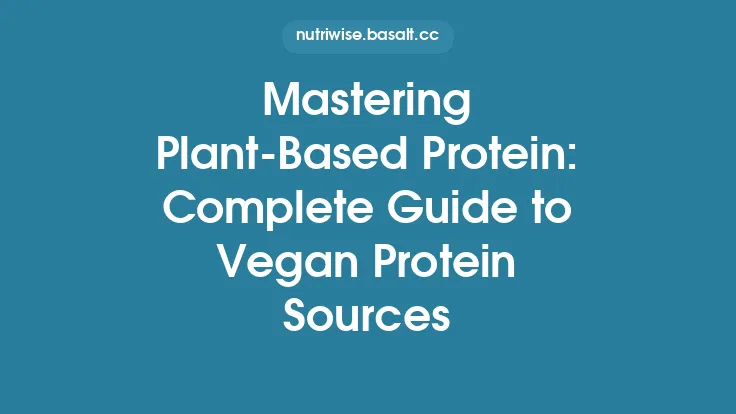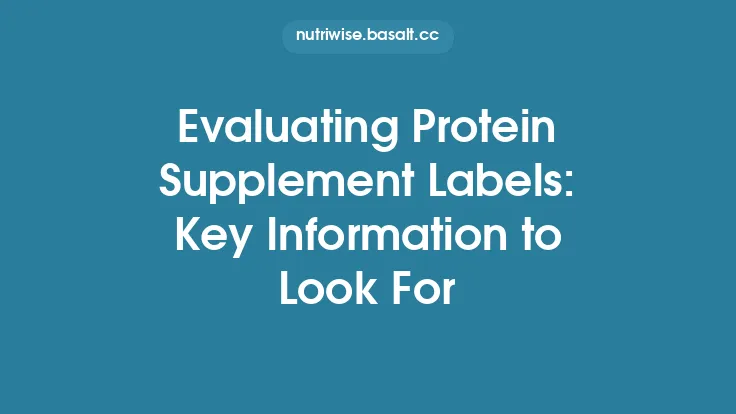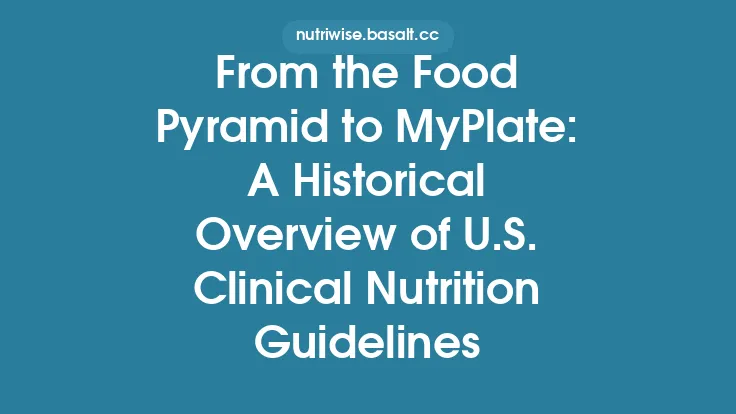Protein digestion is a highly orchestrated process that transforms the complex, three‑dimensional structures of dietary proteins into free amino acids and short peptides ready for absorption. Central to this transformation are a suite of proteolytic enzymes—proteases—that act in a stepwise fashion, each with distinct substrate preferences, catalytic chemistries, and sites of secretion. This guide walks through the major proteases involved, from the acidic environment of the stomach to the enzymatic arsenal of the pancreas, and explains how their molecular mechanisms collectively achieve complete protein breakdown.
The Landscape of Digestive Proteases
Digestive proteases can be grouped according to their origin (gastric vs. pancreatic), catalytic type (aspartic, serine, metalloprotease, etc.), and functional role (endo‑ vs. exopeptidases). In the human gastrointestinal tract, the primary contributors are:
| Origin | Enzyme(s) | Catalytic Class | Primary Action |
|---|---|---|---|
| Stomach | Pepsin (A, B, C) | Aspartic | Endoproteolysis of peptide bonds preferentially at aromatic residues |
| Pancreas | Trypsin, Chymotrypsin, Elastase, Carboxypeptidases A & B, Aminopeptidases N & A | Serine (trypsin, chymotrypsin, elastase) and Metalloprotease (carboxypeptidases) | Sequential endo‑ and exopeptidic cleavages |
| Intestinal brush border | Dipeptidyl peptidases, aminopeptidases, peptidases | Various | Final trimming to free amino acids |
The coordinated activity of these enzymes ensures that proteins are first cleaved into large polypeptide fragments and then progressively reduced to di‑, tri‑peptides and ultimately to single amino acids.
Pepsin: The Stomach’s Primary Protease
Pepsin is synthesized as the inactive zymogen pepsinogen, which is secreted by chief cells in the gastric mucosa. Upon exposure to the gastric lumen, pepsinogen undergoes autocatalytic conversion to active pepsin. Pepsin belongs to the aspartic protease family and utilizes two aspartate residues in its active site to polarize a water molecule for nucleophilic attack on the peptide bond.
Substrate Specificity
Pepsin preferentially cleaves peptide bonds on the N‑terminal side of aromatic residues such as phenylalanine, tryptophan, and tyrosine, as well as leucine. This selectivity reflects the shape of the S1 pocket, which accommodates bulky, hydrophobic side chains.
Structural Features
The enzyme adopts a bilobed architecture with a deep cleft that houses the catalytic dyad (Asp32 and Asp215 in the human enzyme). The two lobes are connected by a flexible hinge, allowing subtle conformational adjustments that facilitate substrate binding and product release.
Physiological Role
By initiating protein denaturation and cleavage in the acidic gastric environment, pepsin creates peptide fragments that are more accessible to downstream pancreatic enzymes. Although pepsin’s activity diminishes as the chyme moves into the duodenum, its early action is essential for efficient overall protein digestion.
Pancreatic Proteases: Trypsin, Chymotrypsin, and Elastase
Once the partially digested protein bolus enters the duodenum, the pancreas releases a cocktail of serine proteases. These enzymes are secreted as inactive zymogens—trypsinogen, chymotrypsinogen, and proelastase—to prevent autodigestion of pancreatic tissue. Activation occurs in the lumen, where trypsinogen is cleaved by enteropeptidase (also known as enterokinase) to generate active trypsin, which then activates the other zymogens.
Trypsin
- Catalytic Mechanism: Trypsin’s serine protease triad (Ser195, His57, Asp102) orchestrates a classic two‑step reaction—formation of an acyl‑enzyme intermediate followed by hydrolysis to release the cleaved peptide.
- Specificity: The S1 pocket of trypsin is lined with a negatively charged Asp189, favoring cleavage at the C‑terminal side of positively charged residues lysine and arginine.
- Physiological Impact: By rapidly cleaving peptide bonds adjacent to basic residues, trypsin generates new N‑termini that become substrates for other proteases, amplifying the proteolytic cascade.
Chymotrypsin
- Catalytic Mechanism: Shares the serine triad with trypsin but differs in substrate binding.
- Specificity: The S1 pocket is hydrophobic, containing a large aromatic residue (Phe) that accommodates bulky, non‑polar side chains such as phenylalanine, tyrosine, and tryptophan.
- Functional Role: Complements trypsin by targeting aromatic residues that are less favored by trypsin, thereby broadening the spectrum of peptide bonds cleaved.
Elastase
- Catalytic Mechanism: Also a serine protease, elastase possesses a shallow S1 pocket that preferentially binds small, neutral residues like alanine, glycine, and valine.
- Physiological Role: Elastase degrades elastin‑rich regions of proteins and further reduces peptide size, facilitating the action of exopeptidases.
Collectively, these serine proteases generate a heterogeneous mixture of peptide fragments that are subsequently processed by exopeptidases.
Carboxypeptidases and Aminopeptidases: Trimming the Ends
After endoproteolysis, the remaining peptide fragments are subjected to exopeptidases that cleave amino acids from the termini.
Carboxypeptidase A & B (Metalloproteases)
- Metal Cofactor: Both enzymes require a zinc ion at the active site, which polarizes the carbonyl oxygen of the scissile bond.
- Specificity:
- *Carboxypeptidase A* removes C‑terminal aromatic and aliphatic residues (e.g., phenylalanine, leucine).
- *Carboxypeptidase B* preferentially releases basic residues (lysine, arginine).
- Mechanism: The zinc‑bound water molecule acts as a nucleophile, attacking the carbonyl carbon and releasing the terminal amino acid.
Aminopeptidases (N‑terminal exopeptidases)
- Diverse Family: Includes aminopeptidase N, leucine aminopeptidase, and others, each with distinct substrate preferences.
- Catalytic Types: Some are metalloproteases (zinc‑dependent), while others belong to the serine protease family.
- Function: Sequentially remove N‑terminal residues, generating di‑ and tri‑peptides that are optimal substrates for brush‑border peptidases.
These exopeptidases are essential for converting the heterogeneous peptide pool into absorbable units.
Protease Classification: Aspartic, Serine, and Metalloproteases
While the digestive tract predominantly employs aspartic (pepsin) and serine (trypsin, chymotrypsin, elastase) proteases, the presence of metalloproteases (carboxypeptidases) illustrates the evolutionary advantage of employing multiple catalytic strategies.
| Class | Representative Enzyme(s) | Catalytic Residues | Key Features |
|---|---|---|---|
| Aspartic | Pepsin, Cathepsin D | Two Asp residues | Operate optimally at low pH; use a water‑activated mechanism |
| Serine | Trypsin, Chymotrypsin, Elastase | Ser, His, Asp (triad) | Broad substrate range; rapid turnover |
| Metalloprotease | Carboxypeptidase A & B | Zn²⁺ ion + Glu/His | Require a metal ion for nucleophilic activation of water |
Understanding these classes clarifies why certain inhibitors (e.g., pepstatin for aspartic proteases) are highly specific, and why therapeutic modulation must consider the underlying chemistry.
Molecular Mechanisms of Peptide Bond Cleavage
All proteases converge on a common chemical challenge: breaking the amide bond, which is thermodynamically stable due to resonance stabilization. The general scheme involves:
- Nucleophilic Attack – A nucleophile (activated water or serine hydroxyl) attacks the carbonyl carbon of the peptide bond.
- Tetrahedral Intermediate Formation – The attack generates a high‑energy tetrahedral intermediate, stabilized by an oxyanion hole in serine proteases or by metal coordination in metalloproteases.
- Acyl‑Enzyme Intermediate (Serine Proteases) – The intermediate collapses, releasing the amine fragment and forming a covalent acyl‑enzyme complex.
- Hydrolysis of Acyl‑Enzyme – A second water molecule attacks the acyl‑enzyme, regenerating the free enzyme and releasing the carboxyl fragment.
Aspartic proteases bypass the covalent acyl‑enzyme step; instead, they rely on a pair of aspartates to polarize water directly for nucleophilic attack. Metalloproteases use the metal ion to lower the pKa of the bound water, making it a more potent nucleophile.
From Polypeptides to Absorbable Units: The Sequential Breakdown
The digestion of a dietary protein proceeds through distinct phases:
- Denaturation (Mechanical & Chemical) – Gastric acid and peristaltic mixing unfold the protein, exposing peptide bonds.
- Endoproteolysis (Pepsin → Trypsin/Chymotrypsin/Elastase) – Large polypeptides are cleaved into smaller fragments (5–20 residues).
- Exoproteolysis (Carboxypeptidases & Aminopeptidases) – Terminal residues are removed, generating di‑ and tri‑peptides.
- Brush‑Border Peptidases – Dipeptidyl peptidases and other membrane‑bound enzymes complete the hydrolysis to free amino acids.
- Absorption – Amino acids and small peptides are transported across the enterocyte via specific carriers (e.g., Na⁺‑dependent amino acid transporters).
Each step is tightly coupled; the products of one enzyme become the substrates for the next, ensuring a seamless flow from ingestion to absorption.
Physiological Regulation of Protease Secretion
Although detailed regulatory pathways fall outside the scope of this guide, it is worth noting that protease secretion is coordinated with the presence of nutrients in the lumen. Hormonal signals (e.g., secretin, cholecystokinin) stimulate pancreatic exocrine cells to release zymogen granules, while neural inputs modulate gastric chief cell activity. This synchrony prevents premature activation of proteases within the pancreas and ensures that active enzymes are delivered precisely where they are needed.
Clinical Implications of Protease Dysfunction
Deficiencies or dysregulation of digestive proteases manifest in several clinical conditions:
- Pancreatic Exocrine Insufficiency (PEI) – Reduced secretion of trypsin, chymotrypsin, and elastase leads to malabsorption of proteins, weight loss, and steatorrhea. Laboratory measurement of fecal elastase is a common diagnostic tool.
- Peptic Ulcer Disease – Excessive pepsin activity, often in conjunction with gastric acid, can damage the mucosal barrier, contributing to ulcer formation.
- Hereditary Trypsinogen Mutations – Certain mutations cause premature activation of trypsinogen within the pancreas, precipitating acute pancreatitis.
- Protease Inhibitor Overload – Foods rich in natural protease inhibitors (e.g., raw soybeans, legumes) can blunt protease activity, leading to reduced protein digestibility if not adequately processed.
Understanding the specific protease(s) involved in each pathology guides targeted therapeutic strategies, such as enzyme replacement therapy for PEI or dietary modifications to limit inhibitor intake.
Analytical Approaches to Studying Digestive Proteases
Research on proteases employs a variety of biochemical and biophysical techniques:
- Enzyme Kinetics (Michaelis–Menten Analysis) – Determines Vmax and Km for specific substrates, revealing catalytic efficiency.
- X‑ray Crystallography & Cryo‑EM – Provide high‑resolution structures of proteases in complex with inhibitors or substrate analogs, elucidating active‑site geometry.
- Mass Spectrometry‑Based Proteomics – Tracks peptide fragments generated during in‑vitro digestion simulations, offering insight into cleavage patterns.
- Zymography – Gel‑based assay that visualizes protease activity after electrophoretic separation, useful for detecting multiple isoforms simultaneously.
- Isothermal Titration Calorimetry (ITC) – Quantifies binding thermodynamics between proteases and potential inhibitors, informing drug design.
These methodologies collectively deepen our understanding of protease function, specificity, and interaction with dietary components.
Future Directions in Protease Research
The field continues to evolve, with several promising avenues:
- Engineered Proteases – Rational design and directed evolution are being used to create proteases with altered specificity or enhanced stability for therapeutic and industrial applications.
- Microbiome‑Derived Proteases – Emerging evidence suggests that gut microbial proteases complement host enzymes, influencing protein digestion and immune modulation.
- Precision Nutrition – Integrating individual genetic variations in protease genes (e.g., PRSS1, CPA1) with dietary recommendations could optimize protein utilization.
- Non‑Invasive Biomarkers – Development of stool‑based assays for multiple proteases (beyond elastase) may improve diagnosis of subtle exocrine dysfunction.
Continued interdisciplinary research will refine our grasp of how proteases orchestrate protein breakdown and how this knowledge can be leveraged to improve health outcomes.





